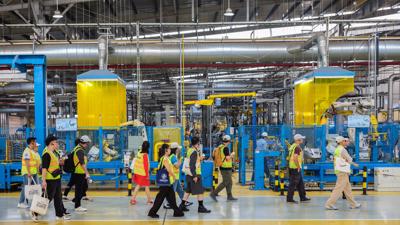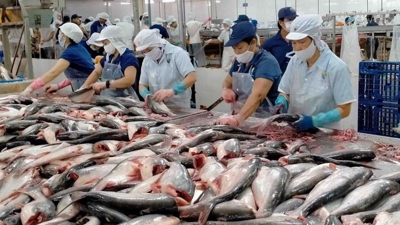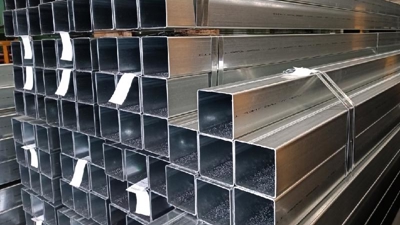Vietnamese Textile Industry Sees Order Rebound, Eyes Ambitious Export Target
Fueled by a rebound in global demand and a surge of interest from new international players, Vietnam's textile industry is emerging as a reliable and competitive source for apparel brands worldwide.

Domestic textile orders have witnessed a significant improvement compared to 2023, according to Ms. Nguyen Thi Tuyet Mai, Deputy Secretary General of the Vietnam Textile Association, who talked to news site congthuong.vn.
Many businesses are experiencing a backlog of orders, with contracts extending at least through the first half of the year, and some firms even boasting commitments lasting until August 2024.
Highlighting the current workload, Ms. Mai noted that "several companies have approached the association seeking to subcontract larger orders to smaller firms."
Traditional Markets Rebound, New Partnerships Emerge
This positive shift in order volume can be attributed to the revival of major export markets like the US and EU. As their economies gradually recover, inflation stabilizes, consumer spending picks up, and inventory levels decline, demand for Vietnamese textiles has risen accordingly.
Beyond traditional customers, Vietnam's textile industry is attracting the attention of a new wave of prominent players.
The "International Supply Chain Connection" event, to be organized by the Ministry of Industry and Trade in June 2024, is drawing a significant number of international buyers, including retail giants Aeon and Uniqlo (Japan), Walmart and Amazon (US), Carrefour (France), Central Group (Thailand), Coppel (Mexico), IKEA (Sweden), and LuLu (UAE).
These companies are actively building detailed shopping lists, with textiles and fashion accessories, footwear, backpacks, handbags, and other related products ranking high on their priority lists.
A representative of the Ministry of Industry and Trade revealed, "Among the hundreds of international buying delegations expected to arrive in Vietnam, a large number have expressed a strong desire to find long-term partners in the textile and footwear sectors."
Reaching the 44 Billion USD Export Target: A Realistic Goal
With a notable increase in orders and the growing interest from international brands, Ms. Mai believes that Vietnam's ambitious textile export target of 44 billion USD in 2024 is entirely achievable.
"If the global economic situation remains relatively stable compared to the current scenario, and there are no further geopolitical conflicts, the textile industry's production activities are likely to experience a positive trajectory," she opined.
Embracing Sustainability and Addressing Supply Chain Bottlenecks
Despite the optimistic outlook, the Vietnamese textile industry still faces a number of hurdles. One key challenge is navigating environmental and labor commitments.
Vietnam is a signatory to critical agreements like COP 26, pledging to achieve net-zero greenhouse gas emissions by 2050, with a 30% reduction by 2030.
Textile companies must comply with international environmental and labor regulations, alongside the increasingly stringent green standards imposed by brands and importing countries.
Another hurdle lies in overcoming raw material shortages. The Vietnamese textile industry continues to grapple with a bottleneck at the source, experiencing a shortage of fabrics and synthetic fibers for production.
This dependence on external suppliers hinders Vietnam's production autonomy and restricts its ability to climb the ranks within the global supply chain.
Vietnamese textile firms frequently find themselves locked into contracts characterized by low prices, small order quantities, and tight delivery deadlines.
This, coupled with rising production costs and transportation fees that have doubled or tripled in some cases, is eroding Vietnam's advantage in terms of cheap labor.
Embracing Digitalization and Strategic Partnerships
To navigate these challenges effectively, Ms. Mai emphasizes the need for Vietnamese textile companies to embrace several key strategies.
A shift from traditional production methods towards automation and a gradual progression towards smart manufacturing will enhance production capabilities, elevate product quality, and ultimately increase the value proposition of Vietnamese textiles.
By fostering innovation and developing new products with high added value, Vietnamese textile firms can cater more effectively to evolving market demands and brand requirements.
Strategic partnerships with international players will provide Vietnamese companies with access to cutting-edge technologies, new markets, and the potential to enhance their overall competitiveness.
Vietnam's textile industry is steadily positioning itself as a compelling destination for international apparel brands, offering a reliable, reputable supply chain with competitive pricing.
However, to maintain its edge and achieve the ambitious 44 billion USD export target for 2024, the industry must actively work towards improving production efficiency, elevating product quality, and adhering to stringent international environmental and labor standards.
By embracing digitalization, investing in R&D, and forging strategic partnerships, Vietnam's textile sector can solidify its position as an emerging player in the global textile supply chain.







